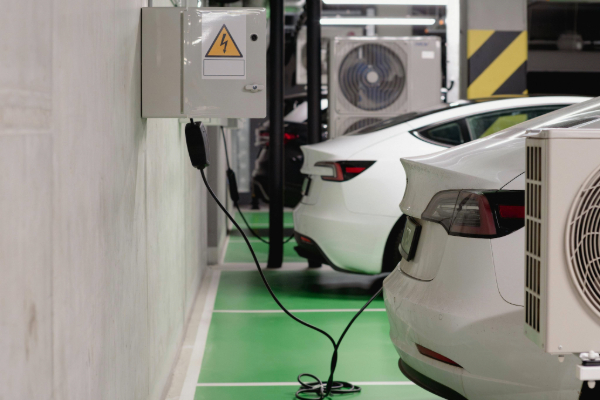India’s Emerging Electric Vehicle Market

The electricity infrastructure plays a vital role in the development of the electric vehicle segment. Photo credit: Jakub Zerdzicki, Pexels.
India’s electric vehicle (EV) market is on a rapid growth trajectory, spurred by ambitious government targets, rising consumer awareness, and increased investment from domestic and international players. As the world’s third-largest automotive market, India is striving to reduce its carbon footprint, cut oil imports, and position itself as a global leader in sustainable mobility.
Market overview and growth prospects
The Indian EV sector is experiencing robust expansion. As of 2024, EVs account for approximately 5 percent of the country’s automobile sector; the government aims to boost that number to 30 percent by 2030. Sales of passenger electric vehicles have surged in recent years, from about 4,700 units annually to nearly 100,000. In 2025, the market size is estimated at $54.41 billion; it’s projected to double to $110.7 billion by 2029, registering a compound annual growth rate (CAGR) of 19.44 percent. Government estimates suggest annual EV sales could reach 17 million units by 2030, with overall EV penetration expected to grow eightfold from current levels. Two-wheelers lead the charge, making up over 50 percent of annual EV sales, followed by three-wheelers at 36 percent and passenger cars with an 11 percent year-on-year increase in fiscal year 2025.
Domestic manufacturers Tata Motors, MG Motor, and Mahindra currently dominate the market. Tata Motors commands over 53 percent of the electric passenger vehicle segment, offering models more affordable than those of international rivals.
Policy landscape and government initiatives
India’s government has introduced a series of policies to catalyze EV adoption:
- Faster Adoption and Manufacturing of Hybrid and Electric Vehicles (FAME) scheme: Launched in 2015 and expanded in subsequent years, FAME has provided subsidies for EV purchases and charging infrastructure.
- E-Drive scheme: Replacing FAME in 2023, this initiative saw its budget surge by 114 percent in 2025 to support charging infrastructure and public transport electrification.
- Production-linked incentives (PLIs): Incentives for domestic manufacturing of automotive components and batteries have jumped over 700 percent, signaling a strategic push for local value addition.
- New EV policy (2024): With a $500 million outlay, this policy aims to attract global investment, tie incentives to local manufacturing, and provide Indian consumers access to advanced EV models.
These measures are designed to attract foreign investment, stimulate domestic manufacturing, and accelerate the development of the charging infrastructure.
Infrastructure and consumer challenges
Despite impressive growth, the Indian EV market faces several hurdles. With only about 25,000 charging stations nationwide, infrastructure development lags behind demand, especially outside major urban centers. At the same time, most Indian consumers are highly price-conscious. The majority of EVs manufactured domestically are priced well below $20,000, while imported models can cost double. And finally, the Indian road conditions and consumer preferences require modifications to global EV models, such as increased ground clearance and durability enhancements.
The Tesla factor: Global competition arrives
A major development in 2024 is the imminent entry of Tesla into the Indian EV market. Tesla is reportedly planning an investment of $2 billion to $3 billion to establish a manufacturing plant in India, with potential sites being scouted in Maharashtra and Gujarat. The company has begun hiring in major cities and is searching for showroom locations in New Delhi and Mumbai.
Tesla’s entry is widely seen as a game changer for several reasons. Industry leaders such as MG Motor India’s Rajeev Chaba believe that Tesla’s presence will attract further investment, intensify competition, and expand consumer choice. Tesla’s advanced technology and brand reputation could set new benchmarks for quality and performance, prompting domestic players to innovate further. Tesla’s push for lower import duties has already influenced government policy, making India more attractive to other global automakers. While Tesla’s current models are positioned as luxury vehicles, the company is reportedly exploring the development of a lower-cost model tailored to India’s price-sensitive market.
However, Tesla will face challenges in adapting its vehicles to Indian conditions and competing on price with established domestic brands.
Market summary
India’s EV market is poised for significant growth, supported by strong policy measures, rising consumer interest, and the entry of global players like Tesla. While infrastructure gaps and affordability remain key challenges, the competitive landscape is set to evolve rapidly. As more international and domestic manufacturers invest in local production and innovation, Indian consumers can expect greater choice and improvements in battery technology, sustainable manufacturing, and connectivity to hasten the transition to electric mobility.
About the author

Shloka Hajare is a Master of Engineering student in the Engineering Management department at Cornell University. With more than two years of corporate experience, she has worked in operations for a multinational corporation and been a founding member for a drone tech startup. As the first-generation graduate and a woman engineer from India, she brings a perspective from diverse fields of a dynamic economy. As an Emerging Markets Institute Fellow, she contributes to the Emerging Markets Institute at the Cornell SC Johnson College of Business.
All views expressed in articles published on the Emerging Markets Institute webpage are those of the author(s) and should not be taken as reflecting the views of the Emerging Markets Institute.
